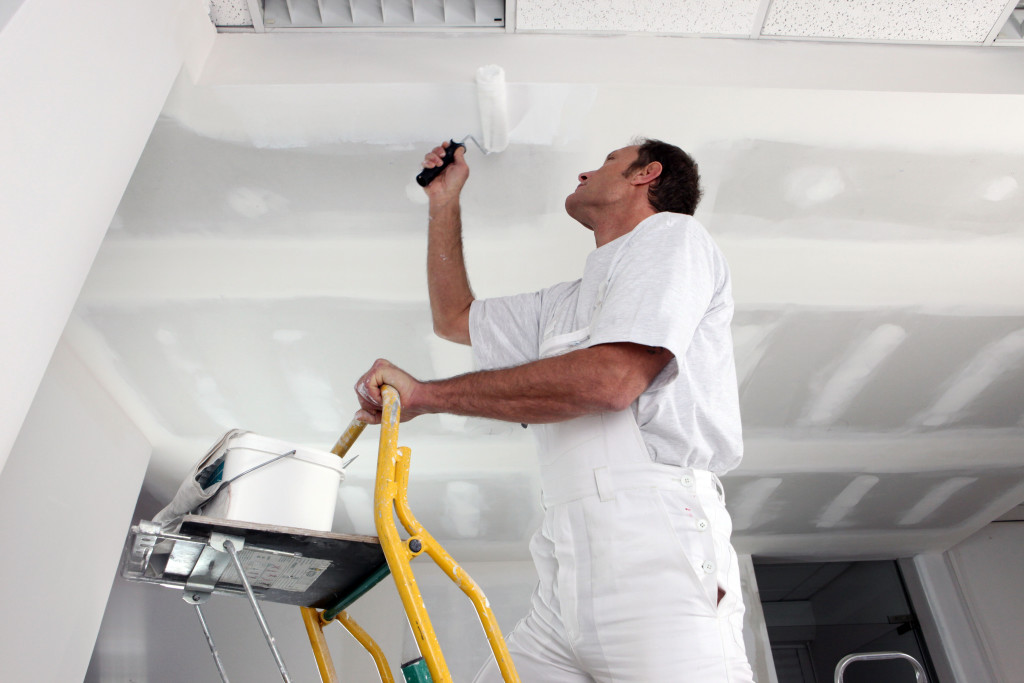 Ultimately, you want a repair to be invisible or at least, depending on the severity of the damage, unobtrusive to the eye. To accomplish this in the middle of a textured surface, the repair has to fill the crack, preserve the surrounding texture and not reopen as the surface shifts over time. Solid drying fillers such as plaster and drywall compound can easily fill in the crack but do little to preserve the texture and usually result in bad approximations of the surrounding surface at best. They also dry hard and brittle allowing the underlying crack to easily break through the surface in short time. So the ideal material must remain flexible to keep up with the movement of the crack and it has to make the crack disappear within its native profile. What can do all this and be easily applied? Latex caulking.
Ultimately, you want a repair to be invisible or at least, depending on the severity of the damage, unobtrusive to the eye. To accomplish this in the middle of a textured surface, the repair has to fill the crack, preserve the surrounding texture and not reopen as the surface shifts over time. Solid drying fillers such as plaster and drywall compound can easily fill in the crack but do little to preserve the texture and usually result in bad approximations of the surrounding surface at best. They also dry hard and brittle allowing the underlying crack to easily break through the surface in short time. So the ideal material must remain flexible to keep up with the movement of the crack and it has to make the crack disappear within its native profile. What can do all this and be easily applied? Latex caulking.
With a great deal of skill and expertise, a finisher can bevel the outer edges of the damaged area so that when the new material is applied over the exposed substrate (drywall, brick, concrete, etc.) it can be gradually eased toward the outer edges without overlapping the surrounding material to keep it level with the existing grade. But even this shows a slight ridge around the repair and is noticeable to those who know it’s there… namely, YOU. And this is the best that can be done without complete replacement. The more common approach I’ve seen people try is to simply try covering the crack with more of the same material used on the overall surface. Las Vegas DRYWALL REPAIR can help with these types of problems. The problem with this is that anything you add to the surface of a textured profile only magnifies where the damage is with a hump in a sea of bumps. So what do you do if you’re not a master mason and don’t want to spend the money on complete removal and replacement of your stucco just to fix some cracks?
It’s not uncommon to find cracks in your plaster or drywall ceilings. It’s not uncommon to find cracks in your wood ceilings either, but this article is about plaster or drywall ceilings that have small or large cracks in them and what actually causes the cracks and how you can repair them.